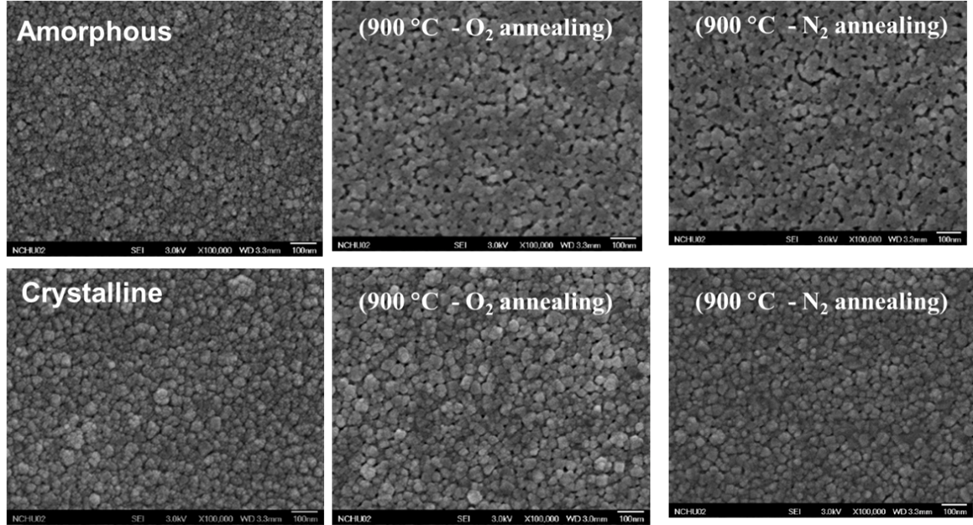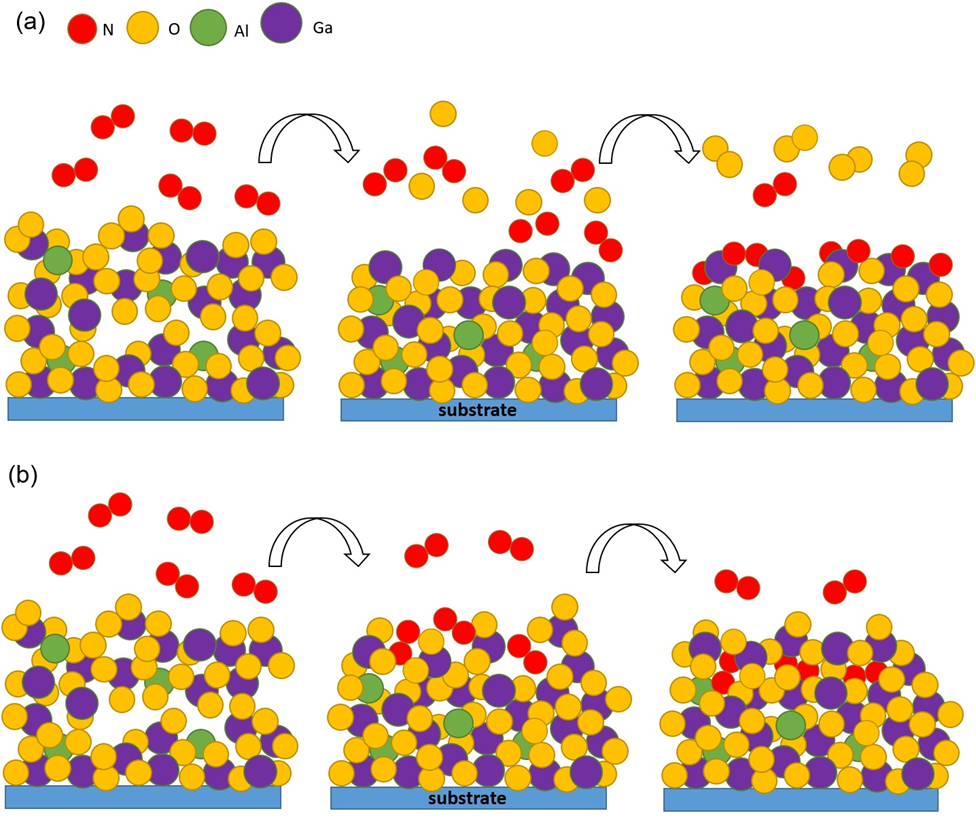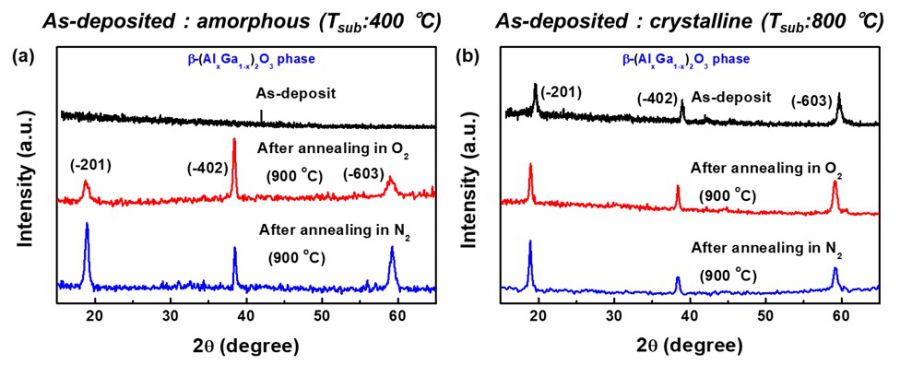設施農業:節能栽培與滅菌【材料科學與工程學系/武東星特聘教授】
| 論文篇名 | 英文:Nitrogen and oxygen annealing effects on properties of aluminum-gallium oxide films grown by pulsed laser deposition 中文:氮和氧氣氛退火對脈衝雷射沉積之氧化鋁鎵薄膜的性質影響 |
| 期刊名稱 | CERAMICS INTERNATIONAL |
| 發表年份,卷數,起迄頁數 | 2020, 46 (15), 24147-24154 |
| 作者 | Tien, Ching-Ho; Hsiao, Bo-Wen; Chen, Chien-Ming; Chen, Mu-, I; Chiang, Jung-Lung; Wuu, Dong-Sing(武東星)* |
| DOI | 10.1016/j.ceramint.2020.06.194 |
| 中文摘要 | 本文利用脈衝雷射沉積法於c面藍寶石基板上成長鋁鎵氧化物(AGO)薄膜,並探討氮氣和氧氣退火對AGO薄膜結構和光學性能的影響。當在低溫(約400°C)下沉積時,AGO膜顯示出非晶結構,而在800°C下則顯示出晶體結構。在900°C下進行後退火後,發生400°C沉積膜非晶態的晶相轉變,並顯示出良好的β相。隨著不同的退火環境,相應的光學帶隙也從5.14 eV增加到5.41-5.46 eV。根據拉曼測量,與退火後400°C沉積的樣品相比,800°C沉積的AGO樣品具有更穩定的O-Ga-O鍵。通常,在氮氣氛中在900°C下進行後退火後,樣品中的氮含量明顯增加。氧原子的快速解離可加速晶體的分解和重排,這使AGO膜吸附了氮原子並導致晶粒尺寸顯著減小。但是,氮的摻入程度似乎對光學性能沒有明顯的影響。所有的AGO薄膜在紫外可見區域均顯示出80%以上的透光率,其計算出的能隙超過5.4 eV。將討論關於透過氧空位或微孔將氮摻入退火的AGO膜中的機理的細節。 |
| 英文摘要 | Aluminum-gallium oxide (AGO) films on c-plane sapphire substrates by pulsed laser deposition are described. Both nitrogen and oxygen annealing effects on the structural and optical properties of AGO films are investigated. The AGO film shows an amorphous structure when deposited at low temperatures (£400°C) while a crystalline structure at 800°C. After post annealing at 900°C, an amorphous-to-crystalline phase transformation for the 400°C-deposited film occurs and shows the preferred β phase. The corresponding optical bandgap also increases from 5.14 eV to 5.41-5.46 eV depending on the annealing ambience. From Raman measurements, the 800°C-deposited AGO sample possesses a more stable O–Ga–O bonding compared to that of the 400°C-deposited one after annealing. Unusually, an evident increase in the nitrogen content is observed for the samples after post annealing at 900°C in nitrogen atmosphere. The rapid dissociation of oxygen atoms may accelerate the disintegration of crystals and rearrangement, which makes the AGO film adsorb nitrogen atoms and cause the grain size to be significantly reduced. However, the extent of the nitrogen incorporation seems to have no apparent effect on the optical properties. All the AGO films show the optical transmittance over 80% in the ultraviolet–visible region with the calculated bandgaps more than 5.4 eV. Details of the mechanism about the nitrogen incorporation into the annealed AGO films via the oxygen vacancies or micro-pores will be discussed. |










